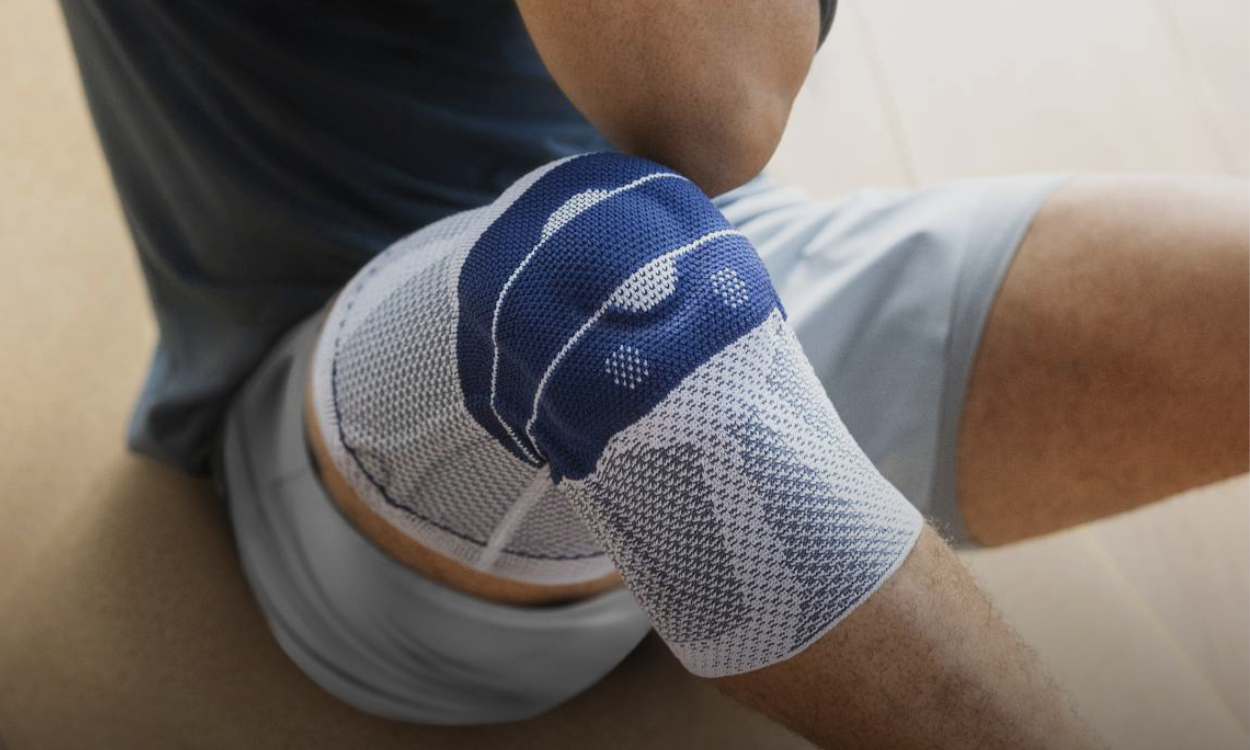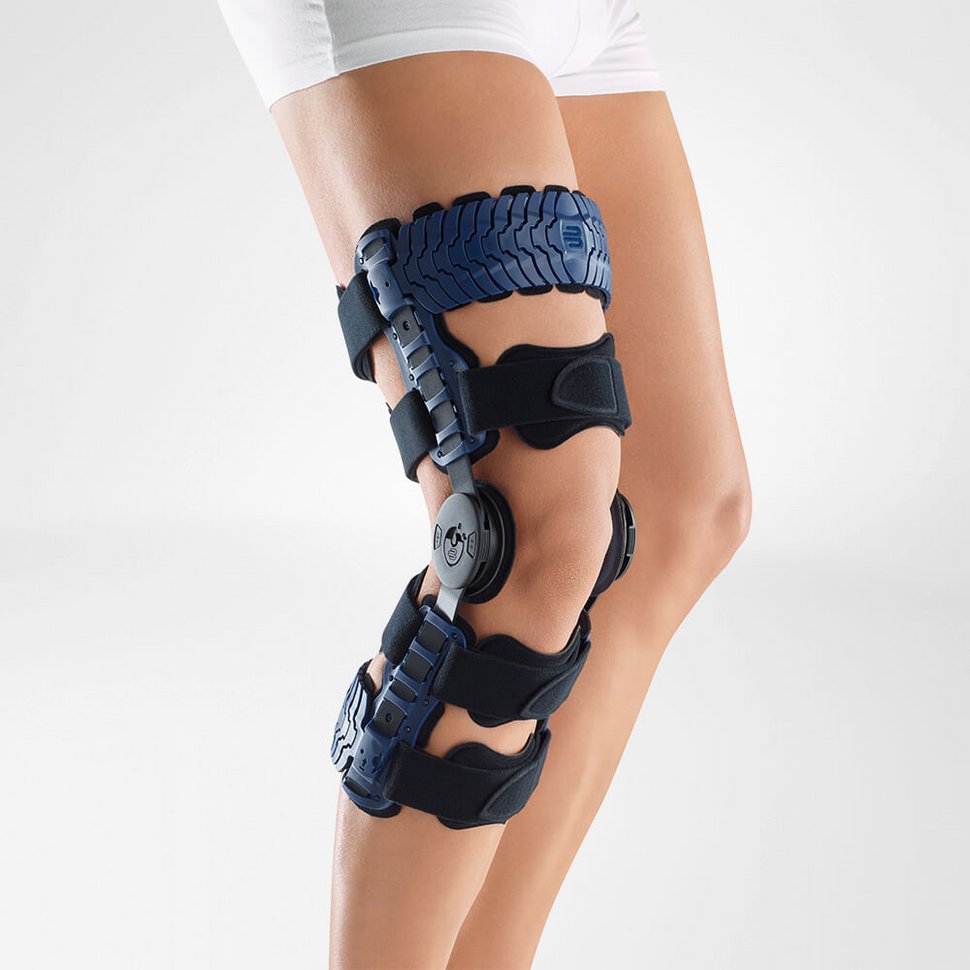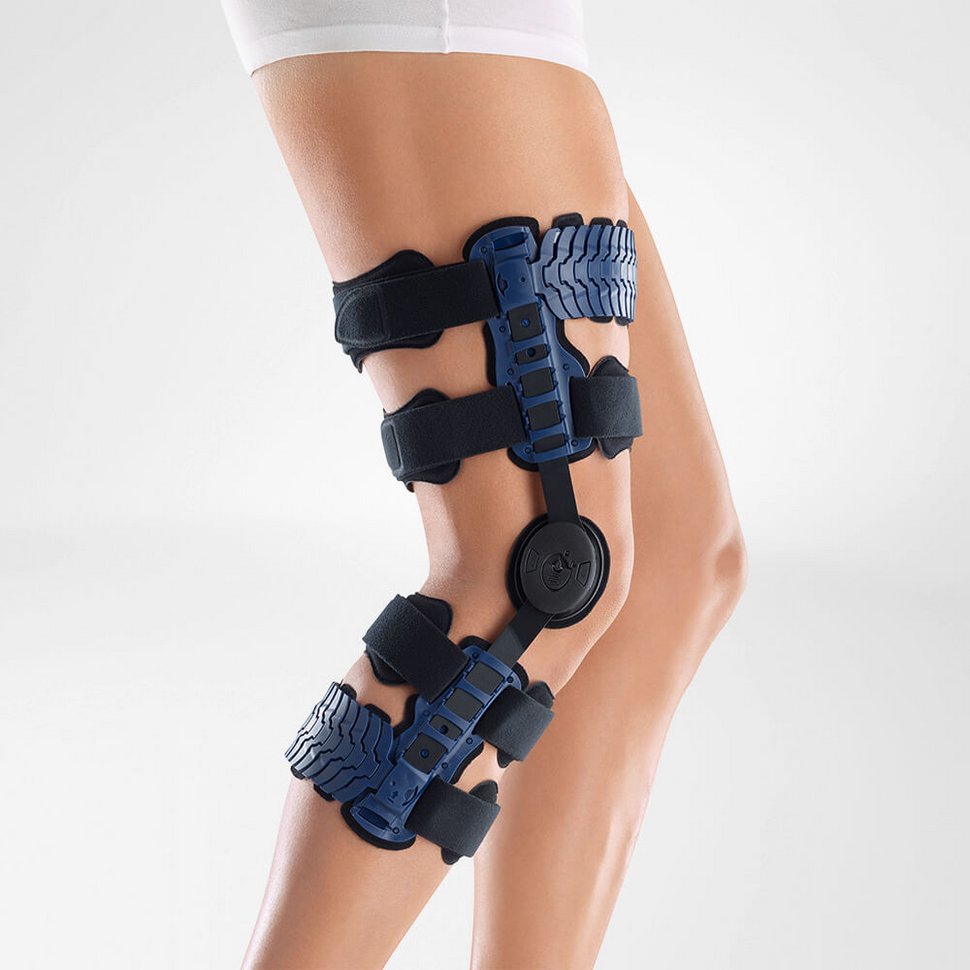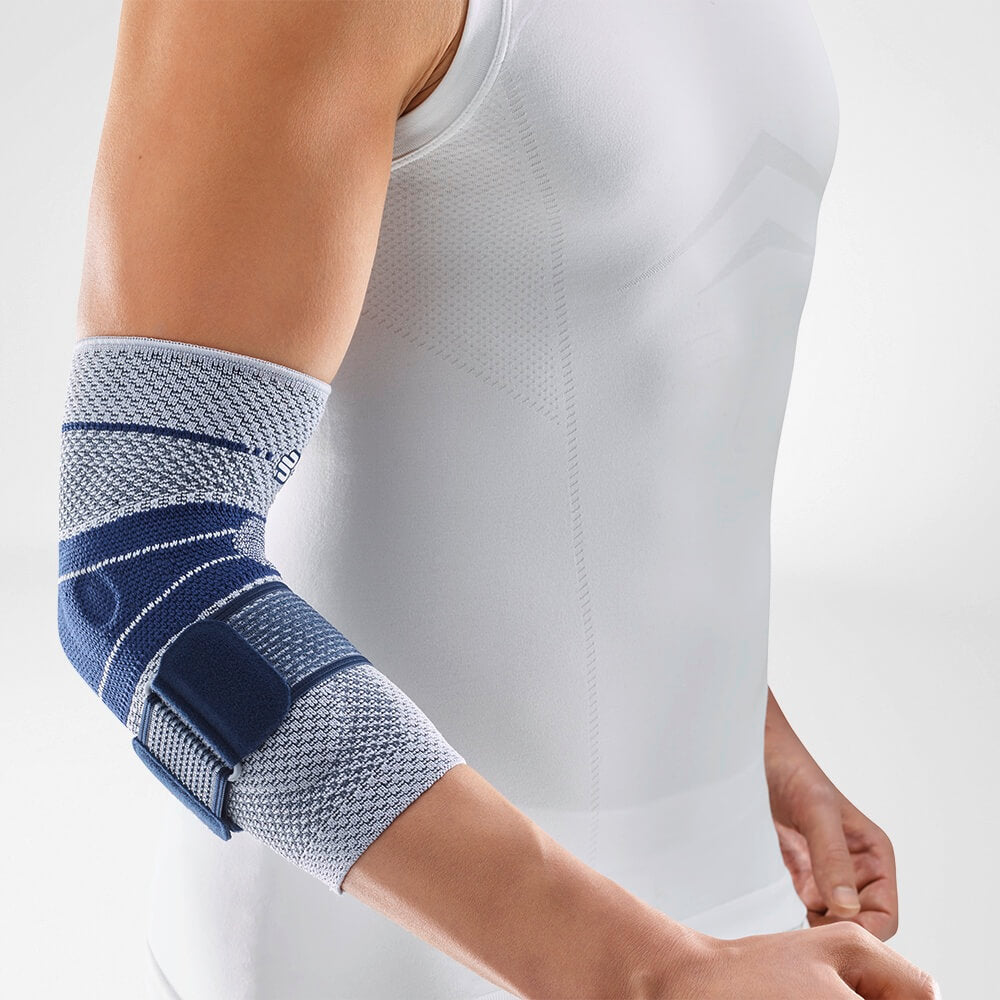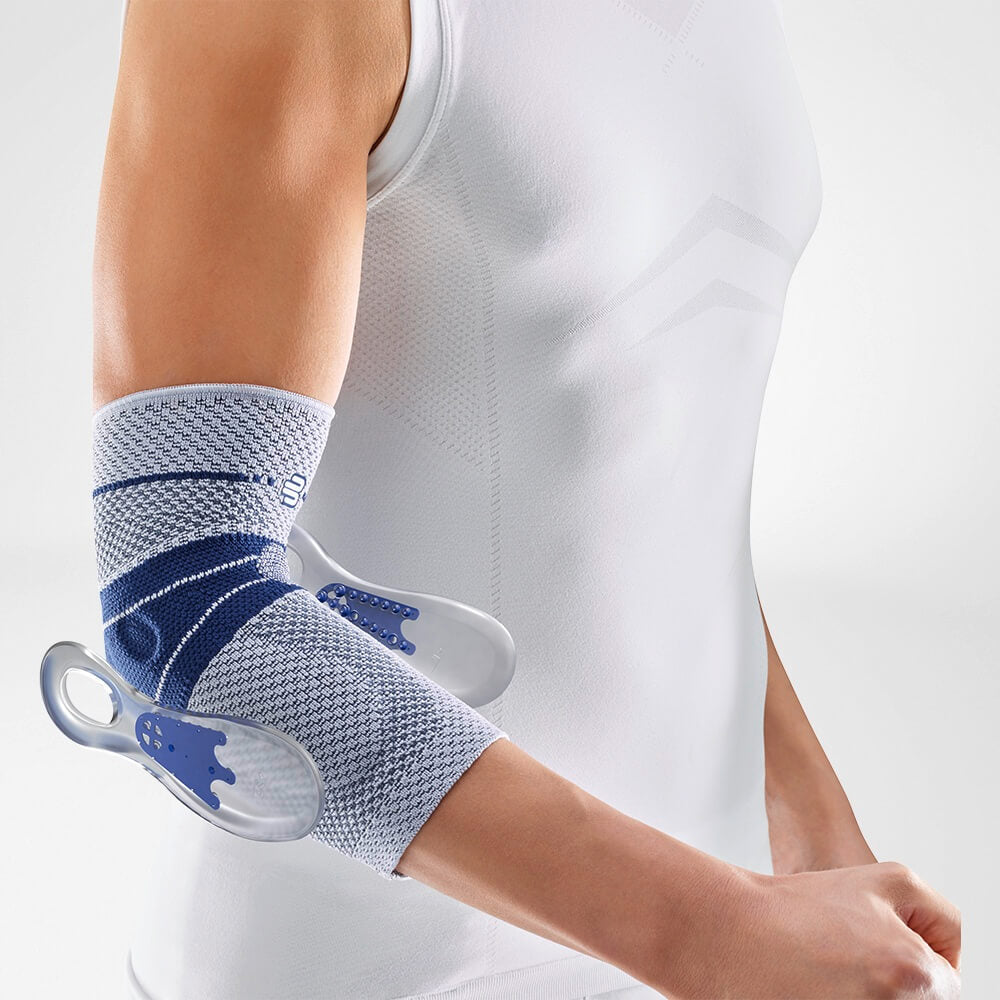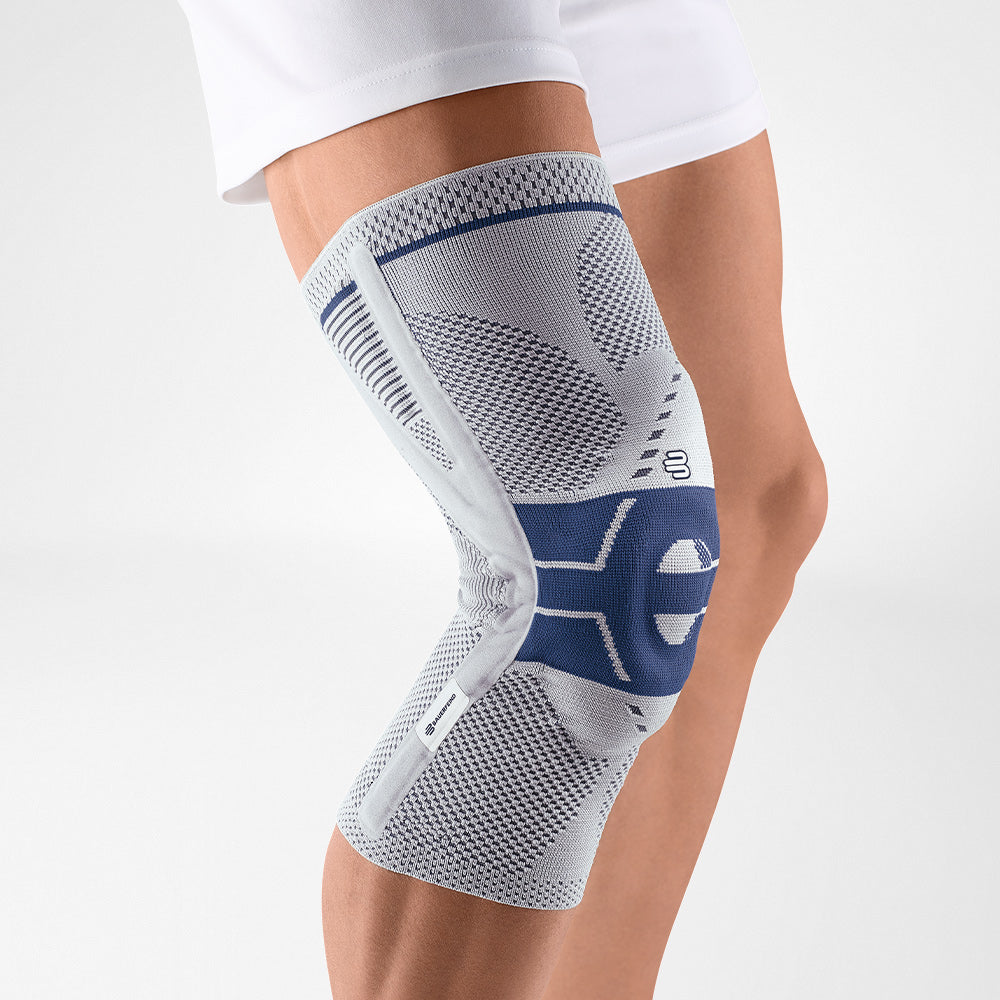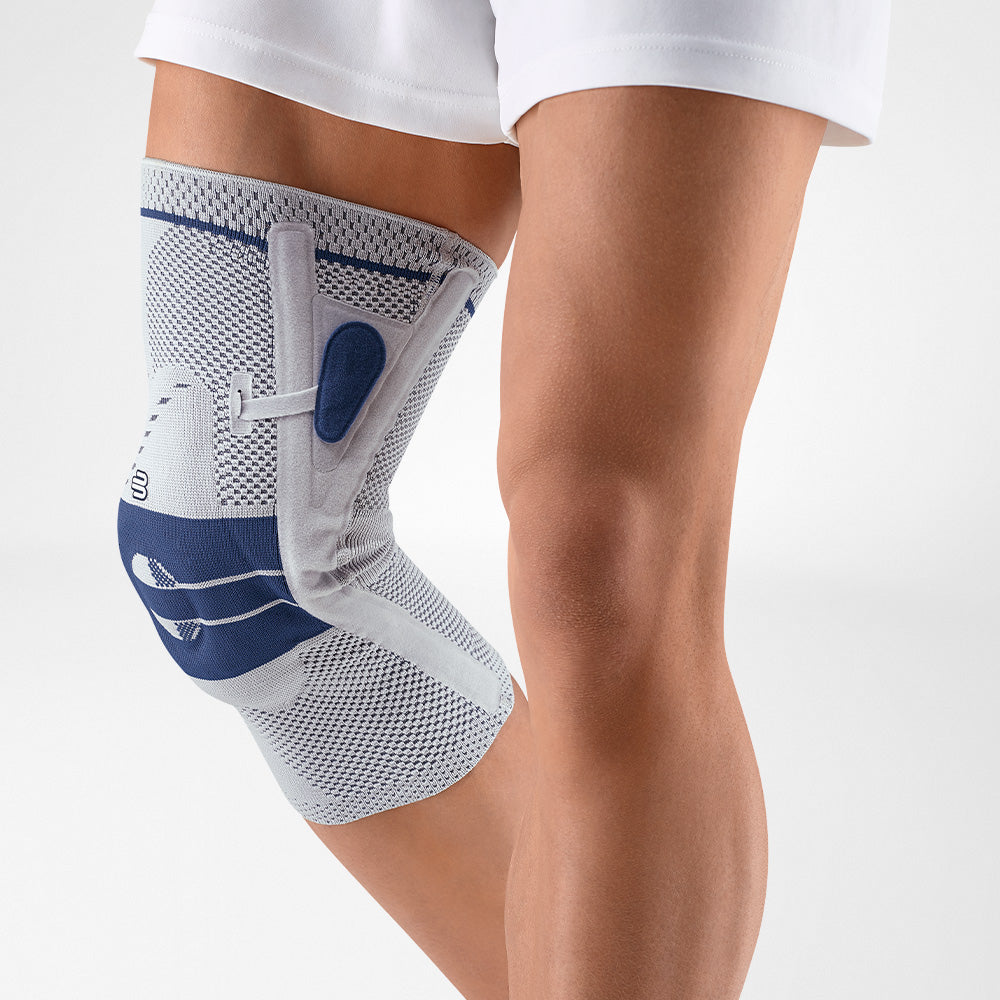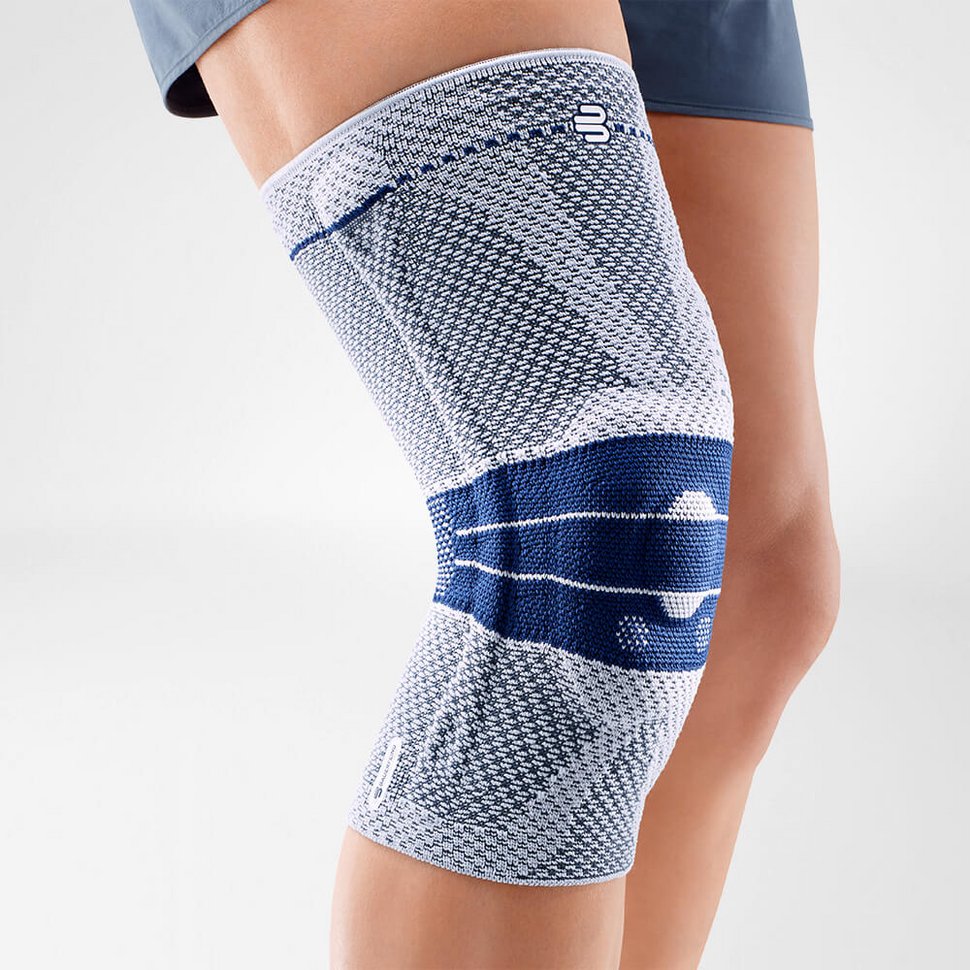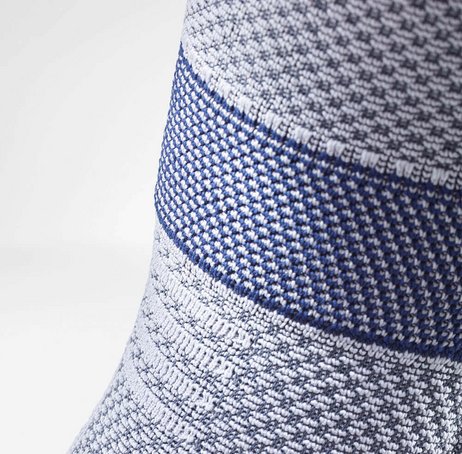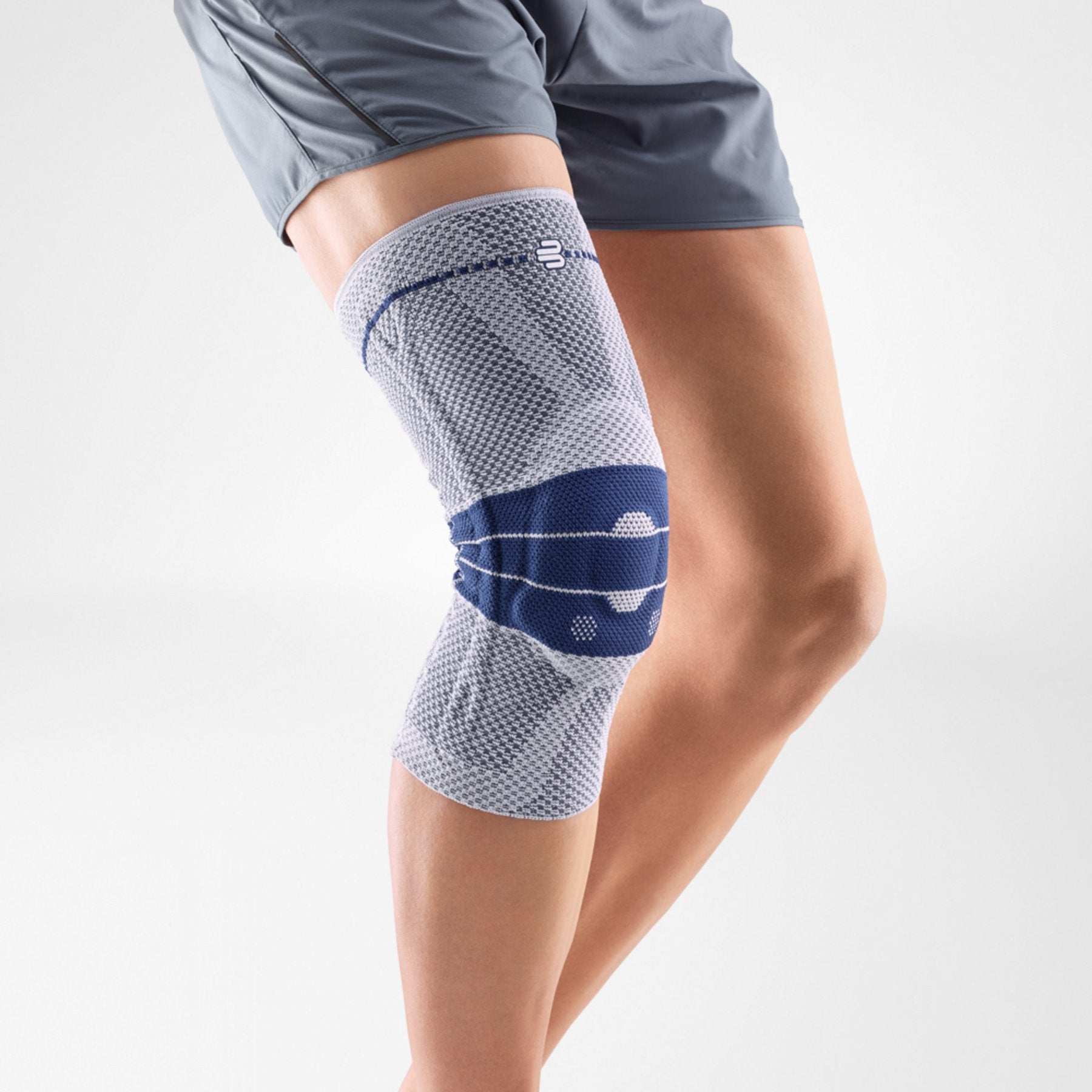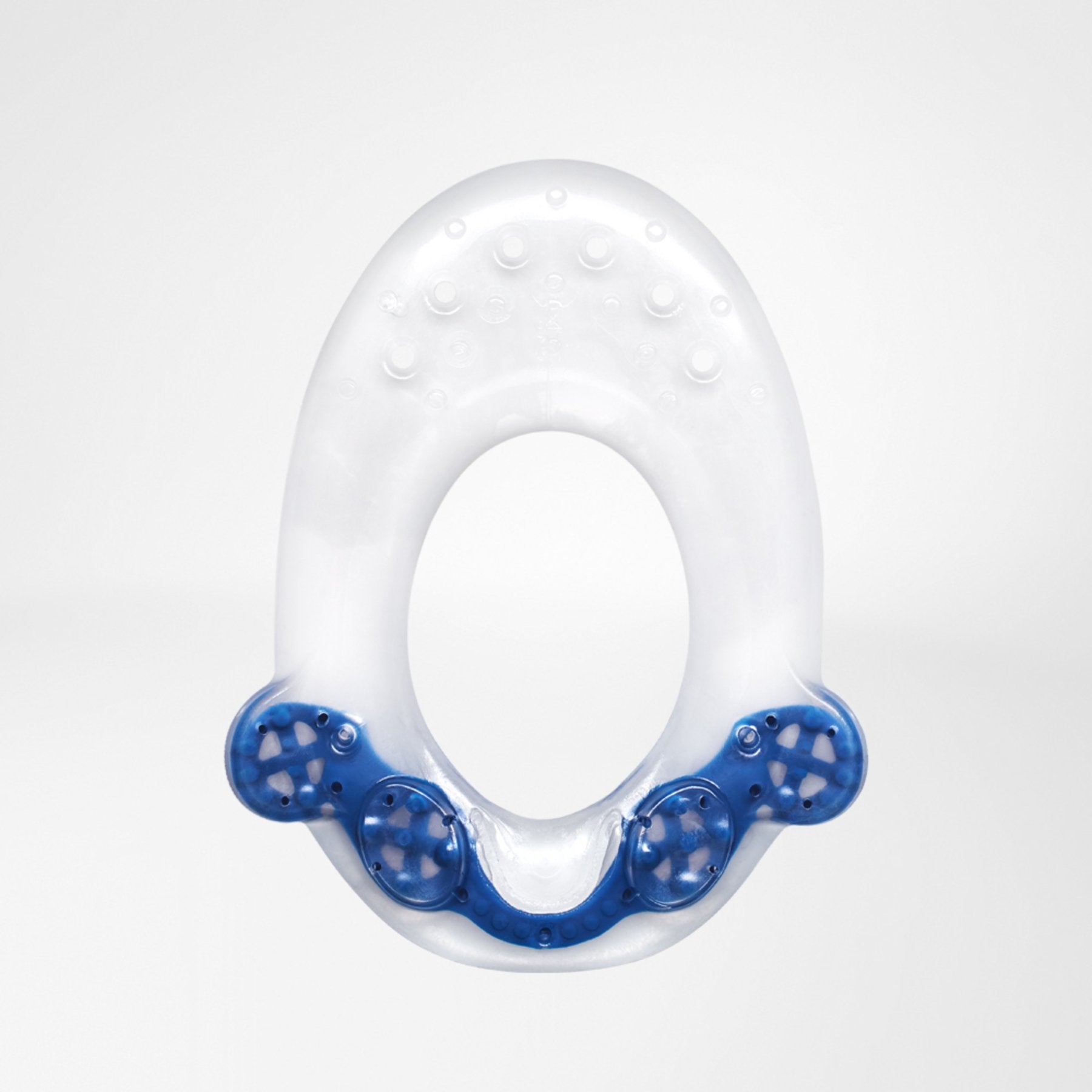The bad news first: osteoarthritis of the knee cannot be cured. But the situation isn't hopeless. With the right treatment, patients can reduce their symptoms and still live an active and pain-free life.

Osteoarthritis often starts gradually and without pain. It typically first becomes noticeable as knee pain and soreness after breaks from activity. Once the diagnosis has been made, many patients feel relieved: finally, they at least know the cause of their knee pain. Now depending on the stage of osteoarthritis, it is necessary to consider and implement different treatment options. All of these options aim not only at reducing pain but also at slowing down further joint wear. To delay or prevent surgery or even an artificial joint replacement (knee replacement, TKR for short), multiple non-surgical treatment methods can help.
The golden rule for the treatment of osteoarthritis of the knee: it is most effective to use therapy methods in combination.
Medication in the treatment of osteoarthritis in the knee
Medication should only be taken for a limited period of time and after consultation with a physician. It can help to reduce pain and facilitate movement, so it is frequently recommended at the start of a gentle exercise program or physiotherapy. Medications in the group of non-steroidal anti-inflammatory drugs (NSAIDs) are typically used to treat osteoarthritis. They relieve pain and reduce inflammation, yet may affect the stomach and blood vessels during permanent use. Therefore, physicians tend to recommend patients with osteoarthritis of the knee change their diet, incorporate exercise and relieve the knee using a brace or orthosis as needed, as these measurements can also have a positive impact on the pain perception.
Which activities help with osteoarthritis in the knee?
Once you start experiencing pain in your knee, it becomes difficult to be active. However, physicians warn against the risk of inactivity when suffering from osteoarthritis of the knee and adopting an incorrect posture to help relieve the pain. During physiotherapy, patients with osteoarthritis of the knee learn suitable exercises that gradually restore the mobility of the knee joints and maintain joint function. At the same time, these exercises strengthen the muscles that relieve the joints and reduce pain. Although this type of physiotherapy should only be performed with professional guidance, patients can also stay active on their own: cycling, walking, swimming, aqua jogging, and gymnastics are good options. Demanding ball games and sports involving jumping are less ideal as the knee has to cushion against shocks and is subjected to additional strain.

Which types of food help manage osteoarthritis of the knee?
The less weight carried by the knees, the better. That is why weight loss can be recommended for cases involving osteoarthritis of the knee and obesity. A change in diet can help here. It is of importance for all osteoarthritis patients: eating red meat or animal fats sparingly, can have a positive impact on osteoarthritis of the knee. The diets of patients with osteoarthritis of the knee should focus on fruit and vegetables, leafy greens and plant-based oils, cereals, grains, and fish (especially salmon, mackerel, and herring). Sugar, alcohol, and nicotine should be avoided, as they contain free radicals. An overwhelming number of these substances can benefit the development of diseases such as osteoarthritis.
How do braces and orthoses help?
Although being active generally helps to reduce pain and slow down the progression of osteoarthritis of the knee, it's typically tough at the beginning, especially when stress is painful on the joints. Bauerfeind knee braces and orthoses can help patients to stay active despite their pain. Braces relieve the affected knee, distribute loads and stabilize the joint. They fit comfortably and are ideal companions during everyday life and exercise.

Osteoarthritis of the knee: when does it require surgery?
In some cases, it is possible that non-surgical treatment will not be enough: the knee pain persists and the osteoarthritis in the knee continues to progress. This is when patients will need knee surgery, for example involving arthroscopy with cartilage replacement. If osteoarthritis of the knee is in a particularly advanced stage, only an artificial joint replacement will help to restore the patient's mobility.

